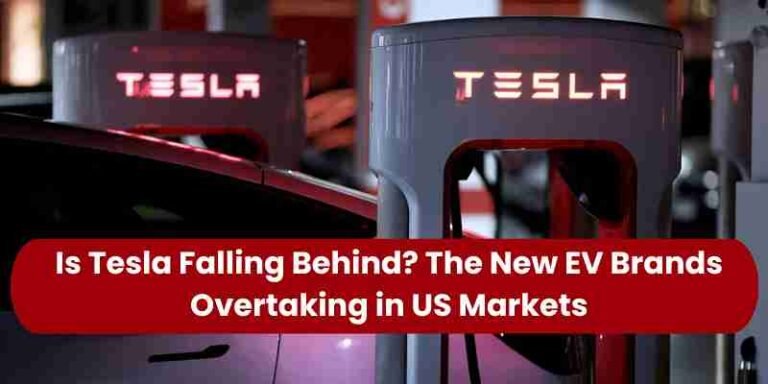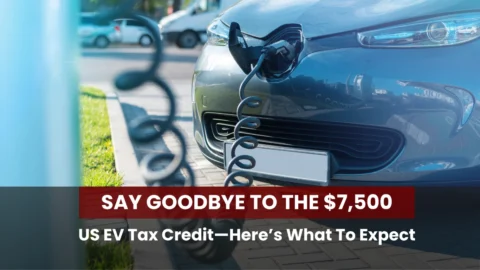Is Tesla falling behind? The data suggests that while the company remains a powerful force, its unchallenged supremacy is being eroded by a wave of aggressive, innovative, and deeply entrenched competitors. The US EV market is rapidly maturing, and this maturation is directly translating into a decline in Tesla market share. New EV brands, backed by both legacy automotive giants and nimble startups, are finally delivering on the promise of diverse, compelling, and often more affordable electric vehicles, creating a genuine and exhilarating period of EV competition USA.
The Erosion of Tesla Market Share: The Numbers Tell a Story
For the longest time, calling the US EV market a competition was a mislabel. it was a Tesla monopoly. At its peak, Tesla commanded over half of all battery-electric vehicle sales in the United States. Fast forward to 2025, and that figure has seen a notable decline. In the burgeoning, increasingly crowded market, Tesla’s slice of the pie is getting smaller, even as the pie itself, the total volume of EV sales continues its robust US EV market growth.
This trend is an inevitable consequence of the market transitioning from an early-adopter niche to a mass-market reality. When the only compelling options were the Model 3 and Model Y, the choice was simple. Now, the modern EV consumer demands choice in size, price, segment, and styling, also the competition is stepping up to deliver. The days of a 60% Tesla market share are likely over, a natural evolution that indicates a healthier, more diverse EV ecosystem.
The New EV Brands Overtaking
The decline in Tesla market share is a direct result of the rise of formidable new electric car brands and the long-anticipated commitment of established automakers. The EV industry shift is being powered by companies finally leveraging their core competencies whether it’s manufacturing scale, dealer networks, or segment expertise to challenge the incumbent.
1. The Domestic Powerhouses: General Motors and Ford
The most significant challengers in the EV competition USA are America’s own automotive giants. General Motors and Ford have poured billions into their electrification strategies, and those investments are now yielding results.
- General Motors: With its modular Ultium platform, GM is rapidly deploying a diverse lineup. The Chevrolet Equinox EV is emerging as a critical competitor. It’s an affordable, practical, and well-equipped crossover that directly targets the Model Y’s territory but often at a lower entry price point. Its impressive sales surge in 2025 signals an explosive growth rate in the affordable EV segment.
- Ford: The success of the Ford Mustang Mach-E proved that a traditional automaker could successfully execute an EV design. More importantly, the Ford F-150 Lightning is a true game-changer. By electrifying the best-selling vehicle in America, the pickup truck Ford tapped into a customer base that Tesla’s current lineup, including the polarizing Cybertruck, has yet to fully capture. The practicality, familiarity, and dealer support behind the Lightning make it a formidable threat in a crucial segment.
2. The Innovation-Driven Startups: Rivian and Lucid
While Tesla was the first successful EV startup, it is no longer the only one. Emerging EV companies like Rivian and Lucid are catering to distinct, high-value segments of the market.
- Rivian: Rivian has captured the attention of the adventure-focused consumer. Their R1T pickup and R1S SUV are praised for their robust off-road capability, unique utility features, and premium build quality. They are not competing on price but on purpose, offering a compelling alternative to the Model X and Model Y for buyers seeking genuine outdoor utility.
- Lucid: Lucid focuses on ultra-luxury and maximum range. The Lucid Air sedan has set new benchmarks for efficiency and range, with its Grand Touring model offering ranges that surpass even Tesla’s longest-range vehicles. For buyers in the high-end luxury sedan segment, Lucid offers a level of sophistication and interior finish that draws favorable comparisons to the best of German luxury brands.
3. The Global Titans and Affordability Experts
Looking globally, the EV industry shift is even more dramatic, with implications for the US market. While direct US imports from Chinese giants like BYD are currently limited, the pressure they exert globally is undeniable, driving the overall market trend toward greater affordability, a key factor in future US EV market growth.
- Korean Brands: Hyundai Ioniq 5 and Ioniq 6 and Kia EV6 have become two of the top EV brands in US for a simple reason: they deliver exceptional value. Built on the advanced E-GMP platform, these vehicles offer super-fast 800-volt charging, distinctive styling, and spacious, well-appointed cabins at competitive prices. They are quickly capturing the mainstream family buyer who might find a base-model Tesla electric cars too spartan.
The Electric Vehicle Trends 2025: A Market Demands Diversity
The current electric vehicle trends 2025 point toward a more fragmented and consumer-centric market. The one size fits all approach that fueled Tesla’s initial success is no longer sustainable.
- Segment Specialization: Consumers are no longer just looking for an EV; they want an electric truck, a luxury sedan, a budget crossover, or a three-row family SUV. Competitors are excelling at offering segment-specific excellence something Tesla’s relatively stale lineup is struggling with.
- Affordability is King: While luxury EVs drove early adoption, the next phase of US EV market growth is driven by the mass market. The availability of models like the Equinox EV and the upcoming wave of sub-$35,000 EVs will put massive downward pressure on pricing, contributing to the narrative of Tesla sales decline if the company does not introduce a truly affordable mass-market vehicle soon.
- The Dealership Experience: While Tesla pioneered the direct-to-consumer model, many mainstream buyers still value the traditional dealership experience, test drives, trade-ins, service centers, and established relationships. The extensive dealership networks of the legacy automakers are proving to be a powerful, underappreciated competitive asset in the mass-market transition.
Closing Remarks: A New Era for Tesla Electric Cars
The narrative is not that Tesla electric cars are failing; far from it. The company remains the volume leader and a powerful innovator. However, the title of the world’s most innovative automaker is now fiercely contested. The substantial decline in Tesla market share is the clearest indicator of a seismic EV industry shift.
The new electric car brands are not just copying Tesla; they are learning from its successes and failures and building next-generation vehicles that resonate with a broader, more mature market of electric vehicle drivers. For consumers, this intense EV competition USA is a massive win, leading to more choices, better technology, and increasing affordability. Tesla vs competitors is no longer a one-sided race; it is a full-blown automotive war, and only those who adapt fastest will be the top EV brands in US of the next decade.
Everything You Need to Know
The primary cause is fierce EV competition USA. Traditional automakers like Ford and GM, along with new electric car brands like Rivian and Lucid, are introducing high-quality EVs in various segments giving consumers alternatives to Tesla electric cars for the first time.
Beyond Tesla, the top EV brands in US include established players like Ford with the F-150 Lightning and Mustang Mach-E and General Motors with the Chevrolet Equinox EV and Cadillac Lyriq, as well as Korean brands Hyundai and Kia.
Yes, affordability is a key factor in the EV industry shift. While some luxury contenders are higher priced, mass-market vehicles like the Chevrolet Equinox EV and various models from Hyundai or Kia often offer lower starting prices than the Tesla Model 3 or Model Y, helping drive US EV market growth among budget-conscious buyers.
While the global market for Tesla electric cars remains strong, the company has seen a significant Tesla sales decline in terms of market share percentage, dropping in the US as EV competition USA delivers a wider array of choice. The total volume of EV sales is up, but the percentage held by Tesla is shrinking.
The main trend is market maturation and segmentation. Early EV buyers focused on technology and range; current buyers are demanding diversity. The market is shifting from performance-focused sedans to practical electric trucks, affordable crossovers, and luxury SUVs, necessitating a complete EV industry shift towards offering a full product portfolio.
For more hacks on maximizing your EV range, or car tips on finding the best charging deal, join the conversation at Ask about cars!
For More Related Blogs:
Tesla Model Y vs Ford Mustang Mach-E—Who Dominates?
Tesla EV Market Share Hits 8-Year Low—What It Means for U.S. Drivers
Could This $60K Tesla Model Y Outperform Your Gas SUV?
Why the Tesla Model Y Refresh Flopped in Q2 2025







